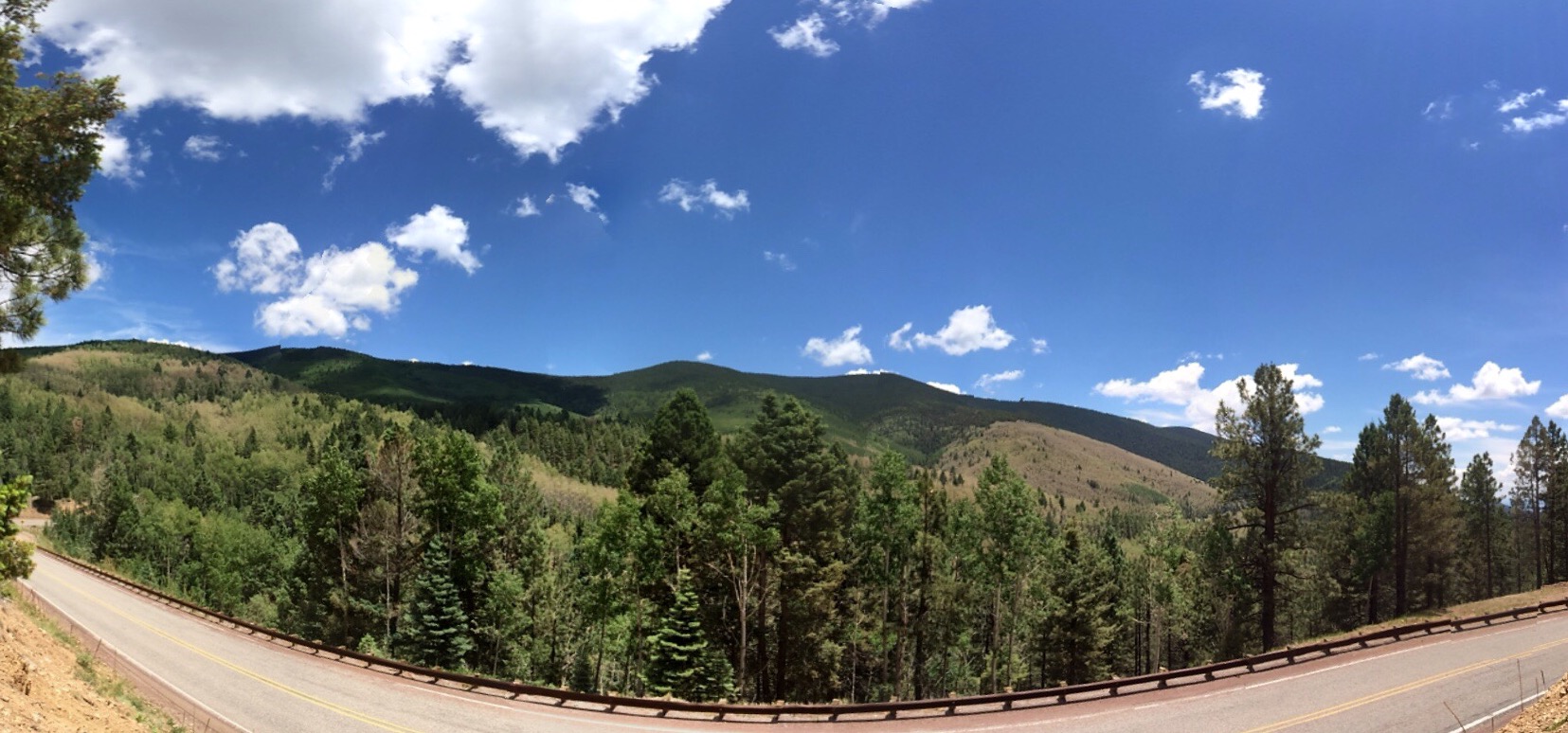Sierra Los Pinos
You are here
Western Tent Caterpillar, Western Spruce Budworm Active
They’re Back! And This Year, They Aren’t Alone
Western Tent Caterpillar, Western Spruce Budworm Active on
Santa Fe National Forest
SANTA FE, NM – July 7, 2016 – For Immediate Release. Forest Service entomologist Dr. Andrew Graves confirms that the western tent caterpillar that feasted on the Santa Fe National Forest’s aspen groves last year is back for more. And this year, the mixed conifer forests at lower elevations are feeling the effects of another defoliator, the western spruce budworm.
The damage is clear to visitors to areas along NM State Highway 475, the road to the Santa Fe ski area. For example, at Black Canyon Campground, the trees’ reddish-brown color is a sign of extensive munching by the larvae of the spruce budworm that will eventually turn into small, mottled-brown moths. Budworms spend the winter as hibernating larvae and wake up hungry. On their preferred menu are spruce, Douglas-fir and white fir.
Further up the highway between Big Tesuque and Aspen Vista, the tent caterpillar’s presence is apparent from the sparse foliage and the silken “tents” the caterpillars build on aspen branches to protect their larvae. Up close, their one-inch hairy bodies in multicolored hues of black, orange and blue are easily spotted. Aspens may be their favorite target on the Santa Fe National Forest, but they also feed on willows, cottonwoods and mountain mahogany.
So what does this mean for the trees? A couple of years of budworm defoliation can impede the tree’s growth. Four or five years of infestation can cause deformities, top-killing and, ultimately, tree mortality. Tent caterpillar outbreaks in the aspens are usually short-lived and more of a nuisance than a killer. In most cases, the affected aspens will refoliate over the summer, and the only evidence of the tent caterpillar’s dirty work may be a drabber shade of yellow in the fall.
Dr. Graves, who works for Forest Health Protection in New Mexico out of the Forest Service Southwestern Regional Office, said the trees’ fate may depend on moisture. “I’m hopeful that the amount of rain we’ve had and that we expect to have in the next few months will help the trees recover, and we will not see large-scale tree mortality from either the tent caterpillars or the spruce budworms.”
The Forest Service has begun its annual aerial survey flights over the Carson and Santa Fe National Forests to map the extent of insect damage, including the defoliation along Highway 475. Forest Health Protection will continue to monitor defoliation from both insects.
Photo credit: Courtesy of Dr. Andrew Graves, USDA Forest Service
Captions:
1. Spruce budworm defoliation at Black Canyon
2. Spruce budworm larvae on white fir
3. Western tent caterpillar near Big Tesuque
4. Western tent caterpillar larvae on aspen branch
5. Western tent caterpillar north of Big Tesuque

6. Aspen defoliation near Big Tesuque